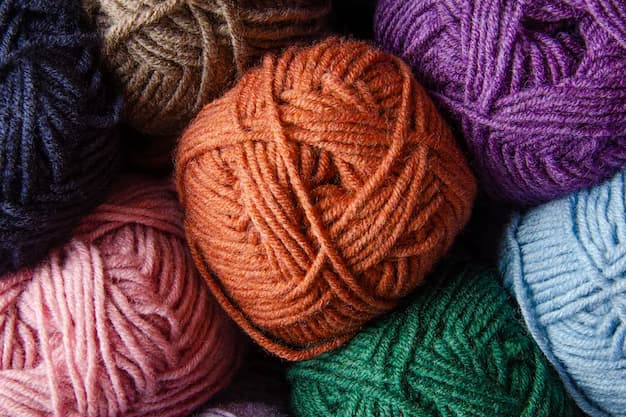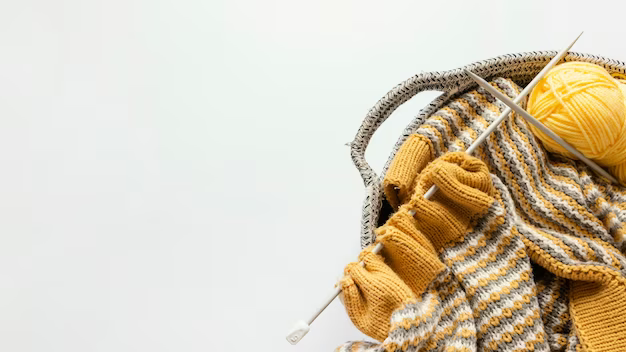Mastering Knitting Gauge Swatches: A Guide
This guide delves into a unique form of handcraft where each individual brings their own styles, using different tensions, needle types, and yarn varieties. This results in every fabric piece being distinct. A key aspect is the comprehension and creation of patterns or charts, focusing on the importance of creating a sample piece to achieve the correct gauge.
A sample piece is essentially a basic rectangular fabric large enough to allow comparison with another’s work using measuring tools. The aim is to adjust variables like needle size or yarn type to make two pieces identical, a process known as achieving gauge. This method provides insights into how various needles, yarns, and stitch patterns work together.
Theoretically, matching someone else’s gauge, or that of a design, means you can recreate their pattern to produce a fabric piece of the intended size. Making a sample piece is simple, thus suitable for beginners. However, matching the exact specifications of a pattern can be difficult, even for experienced practitioners.
Crafting a Gauge Swatch: Step-by-Step Tutorial
Perfecting the art of knitting is not about merely replicating a pattern—it’s about understanding the essence of the craft. Here’s an in-depth guide to knitting a gauge swatch.
Directions:
- Establish a Foundation: Start by casting on enough stitches to create a fabric that measures approximately 6 inches/13 cm wide. This figure typically comes from the gauge provided in your pattern—like 20 stitches or so. Add a margin of at least 4 stitches on each side for wiggle room.
If you’re developing your own pattern, keep the following estimates in mind: for fingering weight, aim for 45-50 stitches, DK weight requires 30-35 stitches, and worsted weight typically needs 25-30 stitches; - Start Knitting: Begin to knit in a plain stockinette stitch—knit one row (right side) and purl the next (wrong side). After two rows, lay out your in-progress swatch to check if it’s turning out as per your size expectations. No need to sweat the small stuff—remember, you’re creating a swatch, not couture clothing;
- Form Your Square: Continue knitting until your swatch morphs into a square, then loosely bind off. A simple way to ascertain if it’s a square is by folding your work into a triangle—if the sides align, it’s a square.
Assess the row gauge and add at least 5-6 rows on both sides, based on the recommendations given; - Wash and Block: Post-knitting, soak your finished swatch in tepid water for half an hour, gently squeeze it between two towels, and pin it onto a soft surface without distorting its shape. Let it air dry overnight;
- Measure and Assess: Utilize a ruler or tape to measure the necessary length and height (typically 10 or 5 centimeters), then count the stitches within that square. Start with the stitch gauge (i.e., the stitches within one row you need to cover that length), then calculate the rows required to cover the same height—this constitutes your row gauge.
Remember, each knit stitch forms a little ‘V.’ Count these Vs horizontally and vertically. Helpful tips include having good lighting and using your knitting needles to count.
Extra Pointers:
After binding off all stitches, you don’t necessarily have to cut the yarn. Depending on the quality, the yarn can be repurposed later on. However, ensure to wash and air dry it once more to eliminate any curling.
Mastering Gauge in Knitting: An Essential Guide
In pursuit of the perfect gauge in knitting, you might come across discrepancies between your measurement and the pattern’s prescribed gauge. Fear not, for this comprehensive guide will lay out methods to adjust your gauge and prevent common mistakes.
Four Methods to Adjust Your Gauge:
1. Switching Needle Size:
This is the evident and simplest method. If you find your swatch too large, reduce the needle size by one or two and knit a new swatch. It may seem like an arduous task, but it saves you from knitting an ill-fitted garment.
A useful trick is to utilize eyelets (knit two together, followed by a yarn over) or purl stitches to denote needle sizes. If you continue to struggle with gauge, consider switching needle brands as different brands have slight variations in sizes.
2. Alter Needle Materials:
Different needle materials can affect your gauge. For instance, bamboo needles offer more friction, creating tighter stitches, while coated steel needles are slippery, forming looser stitches.
If adjusting needle sizes doesn’t work, try experimenting with different needle materials. It’s worth noting that needle preference varies among knitters, so this method should be used as a last resort.
3. Change the Yarn:
Not all yarns are created equal; they can differ in diameter even within the same weight class. If an existing pattern doesn’t work well with your yarn, consider changing it, or switch up the pattern.
4. Adjust Your Tension:
The way you tension your yarn will significantly affect your stitch and row gauge. Adjusting tension on a whim can be challenging, but consider these methods:
- Row Gauge: The height of your stitches is determined by the circumference of your knitting needle—the larger the needle, the larger the loops and rows in your knitted fabric. If you knit loosely, your row gauge may be larger than expected;
- Stitch Gauge: The length of your fabric in the same row is influenced by the strand between two stitches. If you knit tightly and the previous stitch sits close to the right needle, the strand will be shorter, leading to a tighter stitch;
- Tensioning Methods: The way you wrap your yarn affects your tension. For instance, wrapping your yarn once around your pinky finger instead of twice can create looser tension and larger stitches.

Five Common Mistakes to Avoid
- Knitting a Small Swatch: A small swatch may not represent your actual knitting tension accurately. Always knit a large swatch for a more accurate gauge measurement;
- Not Washing the Swatch: Always wash and block your swatch the same way you will with your finished project. This process gives you a realistic idea of how the yarn behaves post-wash;
- Irregular Tension: Consistent tension is key to achieving accurate gauge. Avoid irregularities like knitting tighter at the beginning and looser towards the end;
- Changing Needles or Yarn Mid-Project: Stick to the same set of needles and yarn throughout the project. Changing these midway may impact your tension and gauge;
- Not Counting Stitches Correctly: Carefully count the stitches in your swatch for an accurate gauge. Remember that each ‘V’ shape in the knitted fabric represents a stitch.
Mosaic Knitting: Artistry Meets Gauge Mastery
In the world of knitting, Mosaic Knitting stands out as a captivating technique that combines the art of colorwork with the precision of gauge mastery. This method allows for intricate color patterns without the complexity of stranded colorwork. However, achieving the correct gauge is still essential to ensure your mosaic designs align as intended.
Conclusion
Unlocking the mysteries of knitting gauge can be an empowering journey. It forms the backbone of every knitting project and is a critical tool for beginners and experts alike. Remember to have patience with yourself during this process. With every row and stitch, you’re not just creating a fabric but also crafting a personal relationship with the art of knitting. Happy crafting!
